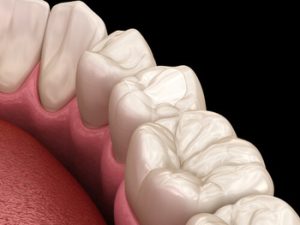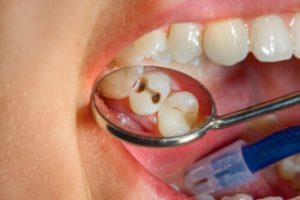Tooth fillings are vital in restoring damaged teeth and preventing further decay. But how long does a tooth filling last? The answer depends on various factors, such as the material chosen, oral care routine, and dietary habits. In this guide, we’ll explore the lifespan of different types of dental fillings, what affects their durability, and when you might need a replacement filling.
Types of Dental Fillings and Their Lifespan
Choosing the right dental filling material is crucial for durability, aesthetics, and overall oral health. Different types of fillings have varying lifespans, strengths, and costs. Here’s a breakdown of the most common dental fillings and how long they typically last.
1. Amalgam Fillings (Silver Fillings)
- Lifespan: 10 to 15 years
- Durability: High – withstands heavy chewing
- Appearance: Metallic silver; noticeable
- Best for: Molars and back teeth
Amalgam fillings (also called silver amalgam fillings) are a blend of silver, mercury, tin, and copper, making them highly durable and resistant to normal wear. These metal fillings have been used in dentistry for over a century due to their affordability and strength.
Pros:
- Extremely durable and long-lasting
- Cost-effective
- Less prone to fractures than composite fillings
Cons:
- Noticeable metallic appearance
- It may expand and contract in response to temperature fluctuations, which can sometimes result in tooth sensitivity.
- Requires more removal of natural tooth structure than other fillings
2. Composite Fillings (Composite Resin Fillings)
- Lifespan: 5 to 10 years
- Durability: Moderate – best for small to medium-sized cavities
- Appearance: Matches the natural tooth colour
- Best for: Front teeth and visible areas
Composite fillings are made from acrylic and ceramic resins, offering a tooth-coloured appearance that blends seamlessly with your natural tooth structure. These fillings are a popular alternative to silver fillings due to their aesthetic appeal.
Pros:
- Looks natural and blends with teeth
- Requires less removal of the tooth structure
- Bonds well to the tooth with dental adhesive, providing extra support
Cons:
- Less durable than metal fillings
- More prone to chipping and staining over time
- Typically more expensive than amalgam fillings
3. Gold Fillings
- Lifespan: 15 to 30 years
- Durability: High – extremely resistant to wear
- Appearance: Metallic gold; noticeable
- Best for: Molars and areas that require strong, durable filling material
Gold fillings, also known as gold inlays or onlays, are one of the most durable filling materials available. While they are not as commonly used due to their cost, gold fillings can last decades without breaking down.
Pros:
- Extremely durable and long-lasting
- Does not corrode or wear down easily
- Gentle on opposing teeth (less wear compared to amalgam)
Cons:
- Very expensive compared to other filling materials
- Requires multiple visits to place
- Noticeable due to its metallic colour
4. Porcelain Fillings (Ceramic Fillings)
- Lifespan: 10 to 15 years
- Durability: High – resistant to staining and wear
- Appearance: Matches the natural tooth colour
- Best for: Front teeth and visible areas
Porcelain fillings, also known as ceramic fillings, are highly aesthetic and resistant to staining. These fillings are often used in inlays and onlays, offering a stronger alternative to composite fillings.
Pros:
- Natural-looking and stain-resistant
- Stronger than composite fillings
- Less prone to wear over time
Cons:
- More expensive than composite resin fillings
- Can be brittle if exposed to excessive force
- Requires more than one dental visit
5. Glass Ionomer Fillings
- Lifespan: 5 to 7 years
- Durability: Low – weaker than composite and amalgam
- Appearance: Tooth-coloured but less aesthetic than composite
- Best for: Non-load-bearing areas and children’s teeth
Glass ionomer fillings, composed of glass and acrylic, stand out for their ability to release fluoride, which aids in preventing further tooth decay. They are commonly used in children’s teeth or areas where strength isn’t a priority.
Pros:
- Releases fluoride to strengthen the tooth
- Bonds well with the natural tooth structure
- Quick and easy to place
Cons:
- Less durable than other fillings
- Prone to wear and rough edges over time
- Not ideal for molars due to lower strength
Which Filling Type is Right for You?
The best type of filling depends on several factors, including:
Aesthetics: If you want a natural look, composite resin or porcelain fillings are ideal.
Durability: If you need a long-lasting option, gold fillings or silver amalgam fillings are the most reliable.
Cost: Amalgam fillings are the most cost-effective, while gold fillings are the most expensive.
Tooth Location: Back teeth need stronger, durable filling materials, whereas front teeth benefit from aesthetic choices like composite resin.
What Affects How Long Fillings Last?
Several factors affect the longevity of a filling, including:
1. Filling Material Used
The durability of dental fillings varies depending on the material used. Metal fillings, like gold and silver amalgam, generally last longer compared to composite resin or glass ionomer options.
2. Location of the Filling
Fillings on teeth used for heavy chewing (like molars) experience more normal wear and may need replacing sooner than front teeth fillings.
3. Eating Habits
Frequent consumption of sugary foods, cold beverages, and sticky foods can weaken fillings and lead to further decay. Avoid other sticky foods that may dislodge a filling.
4. Dental Hygiene Routine
Practising good dental hygiene, including flossing daily and using fluoride toothpaste, helps maintain the longevity of new or replacement fillings.
5. Teeth Grinding (Bruxism)
Grinding your teeth can wear down fillings, causing them to develop rough edges or cracks. Your dentist might suggest using a night guard to safeguard both your fillings and natural tooth structure.
6. Regular Dental Checkups
Visiting your dentist regularly allows early detection of existing fillings that may weaken or leak. Regular dental visits ensure that any replacement filling is done before further issues arise.
Key Indicators That Your Filling May Require Replacement
Over time, fillings naturally wear down and may start showing signs that they need attention. You may need new fillings or fillings replaced if you experience:
- Tooth sensitivity to hot or cold foods
- Pain or discomfort when chewing
- Cracks, chips, or rough edges around the filling
- Discolouration of the filling
- Decay forming around an existing filling
If you notice any of these symptoms, book an appointment with your dentist to assess whether you need a replacement filling.
What Happens During the Dental Filling Procedure?
If you’re getting a filling for the first time, knowing what to expect can help ease any concerns. Here’s a step-by-step breakdown of a typical dental filling procedure:
Initial Examination & Diagnosis
- Your dentist will examine the affected tooth using X-rays if needed to determine the extent of tooth decay or damage.
- They will discuss filling material options such as amalgam, composite, gold, or ceramic resins, depending on your needs.
Local Anaesthesia
- Before starting, the dentist will numb the area around the natural tooth using local anaesthesia to prevent discomfort.
Removing the Decayed Portion
- Using a drill, laser, or air abrasion tool, your dentist will carefully remove the decayed portion of the tooth.
- The tooth will be shaped to prepare it for the filling material.
Filling Placement
- The dentist will insert the dental filling material into the cleaned cavity.
- For composite resin and glass ionomer fillings, a dental adhesive is applied to help the filling bond securely to the tooth structure.
Shaping and Polishing
- The filling is shaped to match your natural tooth structure and ensure a comfortable bite.
- The dentist polishes the restored tooth to smooth out rough edges and prevent plaque buildup.
Final Check
- Your dentist will ask you to bite down and make sure the filling procedure has restored your bite properly.
- If needed, minor adjustments will be made to improve comfort.
After the procedure, you may experience some mild tooth sensitivity for a few days, but this typically subsides as the tooth adjusts to the new filling material.
Can You Extend the Life of Your Fillings?
Yes! While fillings need to be replaced eventually, you can take steps to make them last longer. Here’s how:
Practise Excellent Oral Hygiene
- Brush twice a day with fluoride toothpaste.
- Flossing daily prevents plaque buildup around fillings.
- Use an antibacterial mouthwash to reduce bacteria.
Watch Your Diet
- Limit sugary foods, which contribute to tooth decay.
- Avoid other sticky foods that can pull out new fillings.
- Minimise consumption of cold beverages and acidic drinks.
Avoid Teeth Grinding
- If you grind your teeth, talk to your dentist about a mouthguard.
- Grinding can cause rough edges or cracks in existing fillings.
Schedule Regular Dental Checkups
- Seeing your dentist regularly ensures early detection of any filling issues.
- Regular dental visits help prevent the need for a replacement filling.
Conclusion: How Long Do Fillings Last?
The lifespan of dental fillings depends on multiple factors, including the dental filling material, your oral health habits, and your eating habits. Amalgam and composite fillings, glass ionomer fillings, and ceramic fillings all have different lifespans, but regular maintenance can help them last longer.
Attending regular dental checkups, avoiding sugary foods, and practising good dental hygiene are key to keeping your natural tooth structure healthy and reducing the need for new or replacement fillings.
If you’re unsure whether your fillings need to be replaced, consult with Advanced Dental Care at (02) 6188 7103 to schedule a consultation with a dental professional to maintain the health of your restored tooth.
By understanding how long fillings last and how to care for them, you can ensure a strong, healthy smile for years to come.
References
Cleveland Clinic. (n.d.). Oral hygiene. Retrieved from https://my.clevelandclinic.org/health/treatments/16914-oral-hygiene
WebMD. (n.d.). Dental health and fillings. Retrieved from https://www.webmd.com/oral-health/dental-health-fillings
Healthline. (n.d.). Dental anesthesia: What you need to know. Retrieved from https://www.healthline.com/health/dental-and-oral-health/dental-anesthesia
Mayo Clinic. (n.d.). Bruxism (teeth grinding) – Symptoms and causes. Retrieved from https://www.mayoclinic.org/diseases-conditions/bruxism/symptoms-causes/syc-20356095










